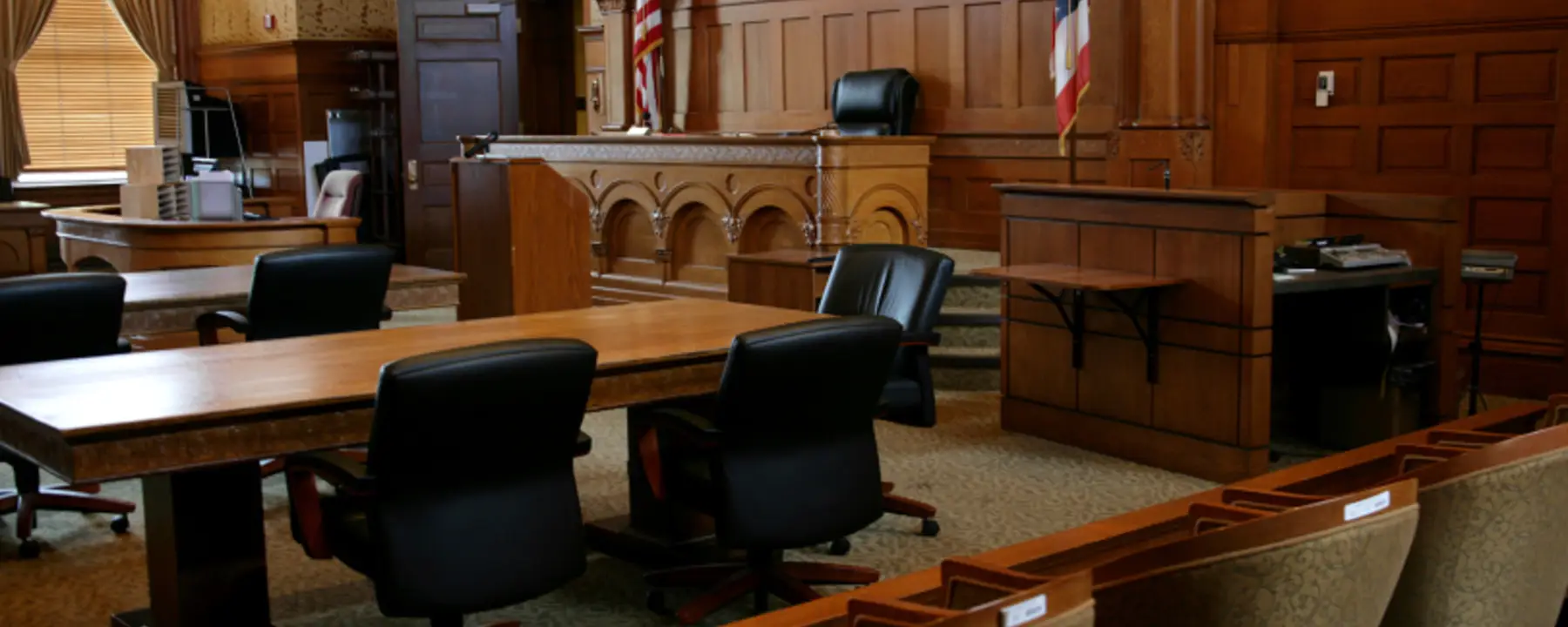Project 3: Addressing High Juror Nonresponse and Failure to Appear Rates in Harris County, TX
Objective
Investigate high juror nonresponse and failure to appear rates in Harris County, Texas and offer recommendations for improvements to be shared with stakeholders.
Approach
Survey people who either did not respond to a jury summons or failed to appear on their reporting date and conduct follow-up interviews with a select group of respondents.
Impact
Develop recommendations to address high juror nonresponse and failure to appear rates that can be implemented in Harris County as well as communities across the country.
To learn more about the Justice for All grant, read Part 1 in this series. Read Part 2 of the series here.
Understanding High Juror Nonresponse and Failure to Appear Rates in Harris County, Texas
Jury trials are a critical element of the U.S. criminal justice system. However, a persistent challenge in the jury process is the inefficiency of creating a jury pool. Frequently, people do not respond to their jury summons or fail to appear (FTA) on their reporting date. High nonresponse and FTA rates undermine system efficiency by making it necessary to summon more jurors to compensate for those who fail to respond or appear. This also increases the burden for citizens who do respond and appear for service because service is not being distributed evenly across the jury-eligible population. Further, nonresponse and FTA rates are often highly correlated with lower socioeconomic status, which often results in jury pools that lack representation.
Nationally, nonresponse and FTA rates increased from an average of 14% in 2019 to 16% in 2022, with some courts reporting rates exceeding 33%. The Harris County District Court reported especially high nonresponse and FTA rates: 37% in 2019 and 48% in 2022. Accordingly, the JFA project team partnered with the Harris County District Clerk’s office, which oversees jury operations for the Harris County District Court, to investigate and identify the factors contributing to these high rates.
Analyzing Juror Nonresponse through Surveys and Interviews
NCSC and RTI worked with the Harris County District Clerk’s office to design an FTA study and create surveys and follow-up interview protocols. NCSC led the survey data collection, and RTI conducted follow-up interviews with individuals who completed a survey to obtain additional details.
The Harris County District Clerk randomly selected 5,000 records from jurors who had recently failed to respond or failed to appear for jury service surveying beliefs, attitudes, and experience with jury service. In total, 240 people responded to the online surveys. The surveys included a question asking respondents whether they would be willing to participate in a follow-up interview.
Common Reasons for Juror Nonresponse and Failure to Appear
When asked specifically why they did not respond or failed to appear for jury service, respondents offered a variety of reasons. Most commonly, respondents reported having a hardship that prevented them from serving or reported not having received the jury summons. Some respondents indicated that they were unable to serve on the date they were summoned, they believed they were ineligible, they believed they were exempt, or they provided other reasons.
Twenty-two respondents agreed to participate in a follow-up interview. Interviewees offered a variety of suggestions to increase summons and jury appearance rates, including increasing the per diem amount; reimbursing parking expenses; providing translation services if needed; providing transportation, such as a metro pass or bus voucher; providing childcare; and fining people who fail to appear for service. Respondents indicated secondary concerns about the safety of downtown Houston, even if transportation issues were addressed, and some people suggested allowing jury service at a variety of locations throughout the area.
Notably, more than one-third of survey respondents reported not receiving a jury summons, despite having lived at their address for more than 24 months. Thus, a sizeable proportion of the nonresponse and FTA rates may be due to undeliverable summonses rather than recalcitrant jurors.
In addition, several respondents and interviewees reported that the summons was recieved too late for them to make arrangements to serve, including after the reporting date had passed. Timely mail delivery also appears to be problematic with respect to documentation (doctor’s affidavits, for example) that was mailed back to the court. As a result, some survey respondents were misidentified as jurors who failed to respond or appear for jury service when, in fact, the documentation to exempt or excuse them from jury service was not received in a timely manner.
Recommendations for Improving Juror Summons Response Rates and Reducing Failure to Appear Rates
Based on information gathered from the surveys and interviews, NCSC and RTI recommended the following improvements:
- Minimize the impact of untimely and undelivered mailings by adjusting time frames and improving address accuracy
- Increase the time frame for jury summons response
- Improve address accuracy
- Refresh jury master list annually
- Revamp system to update recorded changes reported by jurors and undeliverable summonses
- Improve design and content of jury communications
- Increase awareness of what qualifies for excusal, deferral, or hardships
- Update communications across summons and website to be written in plain English and ensure that website is easy to navigate
- Explore adopting different formats of the summons
- Minimize logistical and transportation concerns
- Reimburse parking costs
- Increase per diem amount
- Provide childcare
- Continue gathering feedback on court user experiences
Read the full report here.
- Bureau of Justice Assistance
- National Association of Criminal Defense Lawyers
- Association of Prosecuting Attorneys
- National Center for State Courts





